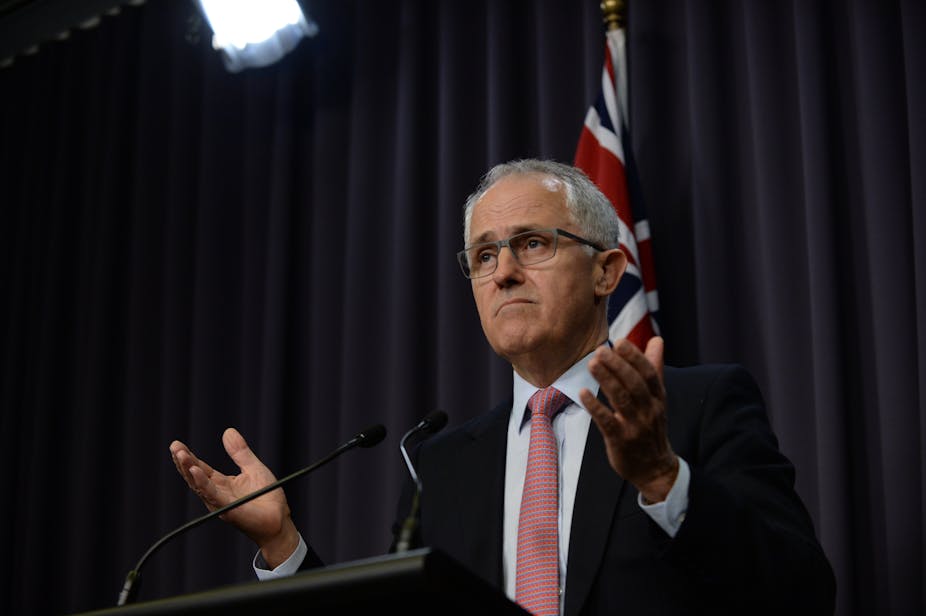With unwavering confidence Communications Minister Malcolm Turnbull unveiled the consultants report showing Labor’s ambitious plan to provide fibre–to-the-premises (FTTP) broadband to the vast majority of Australian households would have cost A$73 billion.
Indeed, Turnbull suggests NBN projections to date have been “extremely optimistic” with the rollout significantly slower than expected, and completion not anticipated until mid-2024.
On the other hand, he says, the Coalition’s plan to use a variety of technologies will be delivered some four years earlier and at an expected cost of A$41 billion. Despite reports of an A$11.5 billion “blowout” in the headline cost of the Coalition’s NBN, the original figure of A$29.5 billion is listed in the strategic review as the capped funding for government equity, with the remainder to be funded with debt.
The review was conducted by NBN Co with assistance from the Boston Consulting Group, Deloitte and Korda Mentha.
The major difference in the Coalition’s plan is that there will be a variety of technologies, referred to as an optimised “multi-technology mix” (MTM), rather than Labor’s mandated technology (FTTP), and some 91% of users can expect maximum download speeds of around 50mbps by 2019, rather than the 57% with similar speeds or above under the revised strategic review outlook for Labor’s NBN.
From my experience using Labor’s 100mbps NBN service, I suspect most users will barely notice the difference between 50mbps and 100mbps for quite some time. Indeed, Turnbull suggests it’s more efficient to continue to upgrade the network over time as demand increases rather than to attempt to future-proof with FTTP in the first instance. Dr Ziggy Switkowski, NBN Co and a team of consultants agree.
Command and control
There is little doubt the state of broadband services in Australia is still well below par and the NBN rollout to date has had far less impact than envisaged. Labor’s commitment to a single technology meant the capital expenditure required to deliver FTTP would obviously cost more and take longer to deliver than a variety of technologies. In Mr Turnbull’s words, “Moore’s Law does not apply to digging holes”.
Further, NBN Co’s new chief Bill Morrow is expected to fix the problems identified with the company’s culture, which include a “fear of being blamed for mistakes” and clinging to forecasts “notwithstanding… evidence to the contrary”.
But it was always going to be this way.
The Boston Consulting Group‘s own separate research suggests centralised command and control models and a focus on specific technologies are no longer relevant in a dynamic industry. From my own research, adaptive approaches to enabling and deploying the infrastructure are much more important than trying to achieve standardised services.
Labor’s plan was about a particular technology – an engineer’s dream but a policy maker’s nightmare. The Coalition expects its approach to be “less intrusive” for consumers and will focus on enabling high-speed broadband services, rather than providing a particular type of technology. These goals are all admirable and significantly more practicable than the original NBN plan.
But the devil is in the detail, and there is not much detail about what will happen now, other than NBN Co gearing up to deliver a range of technologies.
Bill Morrow’s headache
Australian governments traditionally enjoy highly-centralised control over telecommunications policy, and despite the move to MTM rather than FTTP, there appears to be a great deal riding on the new CEO to make all the difference when it comes to delivering the infrastructure, especially in what is likely to be a much more decentralised environment now other technologies will play into the mix.
Whether one person can make so much difference defies the odds, but the experience of other jurisdictions indicates the MTM approach will enable deployment sooner than the FTTP model.
The sticking point is what will happen to NBN Co once the policy objective is achieved. Will it remain under government control, or will it be privatised and create yet another monopoly in Australian telecommunications? Either situation is far from ideal, yet the Coalition suggests firms will be allowed to compete with NBN Co, a significant difference from Labor’s plan.
In the meantime, it seems our government’s role in providing telecommunications services remains firmly entrenched. Whether a dynamic telecommunications market will ever materialise in Australia is doubtful, and politics will likely ensure that many citizens are unable to purchase broadband like one would any other commercial service.
Any broadband is better than none
While Labor’s plan clearly focussed on equality of outcomes delivered by government, the Coalition appears to have simply outsourced the function of providing services with a view that any broadband is better than none. Something had to be done, but whether government should remain so heavily involved in delivering services remains counter-intuitive.
As far back as 1913, AT&T reported that the biggest problem with Australian telecommunications was the extent that the industry was tied to politics, rather than the market. While the Coalition has today provided evidence to support the broadband policy it promised at the election, it seems like more of the same but slightly slower services delivered at less cost, hopefully more affordably and sooner rather than later.
How today’s announcement will affect the existing arrangements with Telstra, and what shape NBN Co will take once the job is done remain unclear.
Turnbull’s plan leaves some room for competition in the future, and is a practicable plan which should enable much faster penetration of a long overdue technology.
But whether the existing NBN Co – even with a new leader – can transform itself sufficiently to deliver on the Coalition’s promises appears unlikely in the short term.
Until the ongoing regulatory review is finalised, today’s strategic review of the NBN at least provides some formal direction for the Coalition’s broadband policy. But anyone hoping for less government involvement in what should be a vibrant and innovative sector, will be disappointed.

